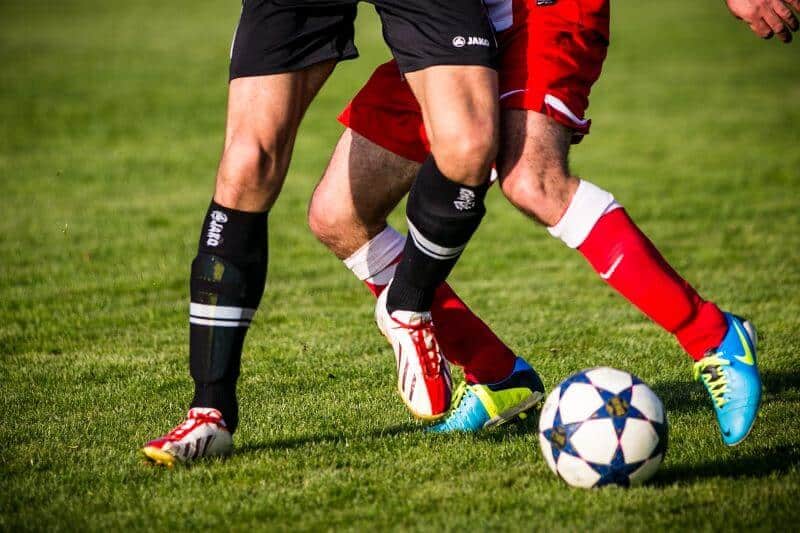This may sound difficult but it’s actually very easy to sprain your big toe. If the toe bends too far towards the top of the foot whilst the sole is flat on the ground, the ligaments and tendons of the toe joint can stretch and tear.
In theory, this could happen to anyone if you bend your toe the wrong way. For example, high heels force the wearers’ weight onto the toes, which are bent at an extreme angle. This can be enough to damage the soft tissues.
However, toe sprain mostly affects sportspeople as they constantly put their feet under more pressure than normal. By pushing off on their toes and running, jumping and changing direction rapidly, they weaken the ligaments and tendons of the metatarsophalangeal joint (or MTP joint). This is the point where the big toe connects with the foot.
The condition is particularly prevalent in footballers and athletes, so it’s usually known as turf toe (although the medical term is metatarsophalangeal joint sprain). This also affects dancers, gymnasts and wrestlers for the same reasons.
What Are the Symptoms?
If turf toe is the result of sudden injury, it will be painful immediately. You may also hear, and feel, an uncomfortable popping sensation when this happens, followed by pain and tenderness. If the condition arises from repetitive activities, it’s likely that pain will come on and increase gradually. In either case, you’ll experience the following:
- Very stiff toe – it’s unlikely you can bend or move it much, if at all.
- Tender and painful – this can be continuous or only when you touch the area. In extreme cases, it’ll be impossible to put weight on your toe.
- Bruising and inflammation – around the base of the toe. This may reach up onto the foot.
- Wobbly joints – the MTP joint might feel unsteady and unable to support your weight.
How Can You Treat Turf Toe?
Happily, there are several ways to manage the problem, depending on the severity.
- Mild cases – the soft tissues are stretched and slightly swollen rather than completely torn. It’s likely that movement won’t be hampered too much.
- Intermediate cases – there are partial tears in the tendons and ligaments of the MTP joint with fairly strong pain and tenderness, and more severe bruising and swelling.
- Extreme cases – the tissues are completely torn with acute swelling and pain. The MTP joint can dislocate and it may even be broken. In this case, surgery will be necessary.
Mild and intermediate cases should heal well, but they’ll need time and plenty of rest. There are several ways to soothe the pain and ease swelling. Talk to your podiatrist for the best methods for you. Here are some of the things they may suggest:
- Rest every few hours and elevate the foot higher than your heart.
- Apply ice to your toe for around 20 minutes and relax.
- Stabilize – tape the big toe to the next toe to restrict movement and provide support. Your podiatrist will show you how to do this correctly.
- In time, you can start to do stretching exercises to increase flexibility and strengthen the joint muscles.
- Orthotics – to support and protect the joint. This is especially vital if you intend to return to sports.
- Over-the-counter anti-inflammatory medicine – but always check with a healthcare professional first.
The Right Advice at Feet By Pody
For reassuring advice and support talk to the experienced podiatrists at one of our London clinics.

